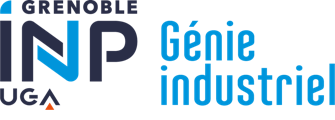Number of hours
- Lectures 12.0
- Projects -
- Tutorials 15.0
- Internship -
- Laboratory works 1.5
- Written tests 1.5
ECTS
ECTS 3.0
Goal(s)
Digital representations are key elements contributing to the product development process. The associated software, mainly CAD software and technical data management systems, allow the manipulation of the product description. This module aims to train students in the use of these tools in order to improve their mastery in the design office, and to specify data quality in the extended enterprise.
This module aims to train students to use these tools in order to improve their control in the design office, and to specify the quality of data in the extended enterprise.to create and modify a partial description of a product being designed through common geometric representations (CAD) and technical data management tools.to identify the different categories of forms that a product can take during its development process.to understand the limits of current software descriptions and to evaluate their consequences on the product development process,to share information on a product through technical data management systems. (The configuration of TDMSs will not be covered in this module).Exchange information between design support software.Organise steps in the product development process from existing software and its constraints.
This module is spread over the two semesters with :
- standard elements of CAD tools and expert uses (CAM, SCAN, Kinematic Simulation) in the first semester
- advanced modelling plus technical data management in the second semester
Content(s)
Complex 3D modelling
1. Introduction
2. Curve and Surface modelling
3. Curve and Surface modelling
4. Volume Modelling
5. Direct Modelling
6. Polyhedral Model Manipulation / VR Scene
Information Systems
7. Configured DMU that takes the need to manage data over time
8. Introduction to PLM/SGDT.
Product Models 1
ISR first year
CC = Assessment of practical work
There are no 'resits' for practical work, so the marks can not be changed.
E1 = Final written exam for the 1st exam period
E2 = Final written or oral exam for the 2nd exam period
N1 = Final mark for the 1st exam period
N2 = Final mark for the 2nd exam period
The course exists in the following branches:
- Curriculum - Engineer student Master PD - Semester 8
Course ID : 4GUP1701
Course language(s): 
You can find this course among all other courses.
Pigl and Tiller The Nurbs Boolk 1994
Jean Claude Leon Courbes et surfaces pour la CFAO 1991
PDM: Product Data Management, Rodger Burden, Springer; 1 edition (November 5, 2003)ISBN-10: 3540403736, ISBN-13: 978-3540403739
Product Lifecycle Management, Antti Saaksvuori, Anselmi Immonen, Resource Publishing (May 19, 2003) ISBN-10: 0970035225, ISBN-13: 978-0970035226
Product Lifecycle Management: Driving the Next Generation of Lean Thinking,McGraw-Hill; 1 edition (October 26, 2005), ISBN-10: 0071452303, ISBN-13: 978-0071452304
Product Lifecycle Management: 21st century Paradigm for Product Realisation, Springer; 1 edition (August 27, 2004), ISBN-10: 1852338105, ISBN-13: 978-1852338107
French State controlled diploma conferring a Master's degree

Common Core presentation
Programme courses S5
Programme courses S6
Supply Chain Management
Programme presentation
Programme courses S7
Programme courses S8
Programme courses S9
Programme courses S10
Product Design
Programme presentation
Programme courses S7
Programme courses S8
Programme courses S9
Programme courses S10
Contacts
Academic staff
- Head of studies:
Pierre Lemaire - Head of 1st Year Program:
Abdourahim Sylla - Head of Supply Chain Management Program:
Irène Gannaz - Head of Product design Program:
Yann Ledoux
Registrar's office
- Head of Registrar's office:
genie-industriel.scolarite@grenoble-inp.fr - Secretary's office 1st Year:
Valérie Demicheli - Secretary's office 2nd Year:
Sylvie Malandrino - Secretary's office 3rd Year:
Vincente Odier - International relations department:
Nadia Dehemchi



